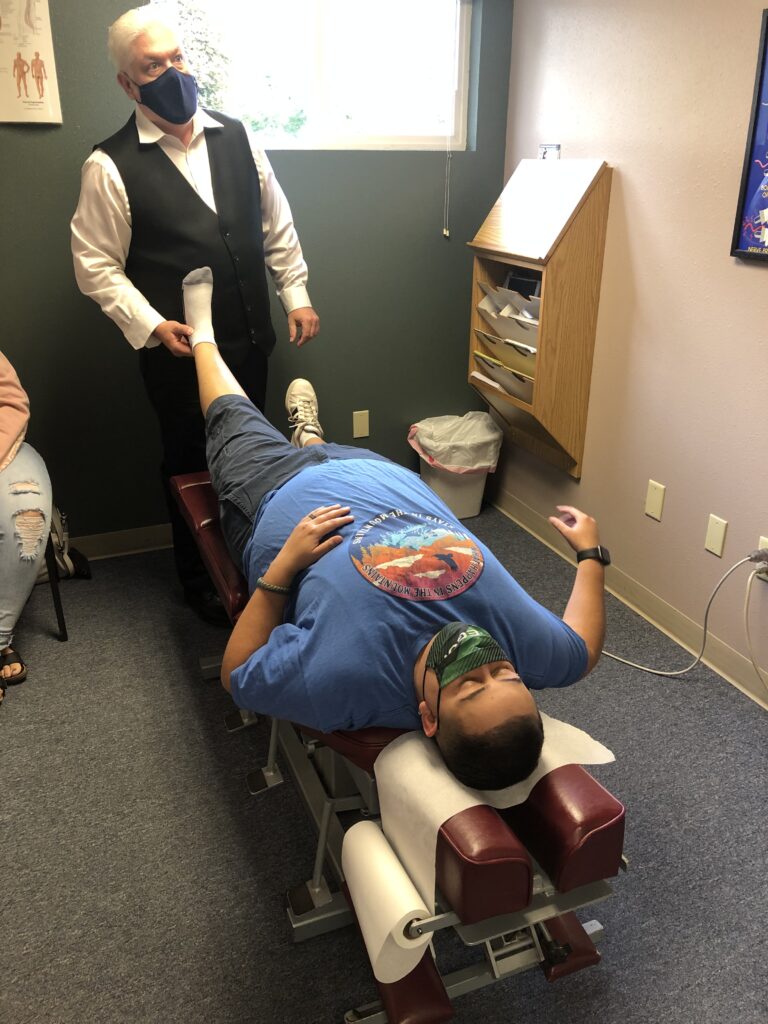If you're looking to improve your joint flexibility and movement, you've come to the right place. It's vital to start with a proper warm-up and incorporate various techniques that can make a noticeable difference in your daily activities. From dynamic stretches to mindful practices like yoga, each method plays an important role in enhancing your mobility. But the benefits don't stop there; understanding how nutrition and hydration impact your joints can further elevate your progress. Curious about the specific tips that can transform your routine? Let's explore these strategies together.
Warm Up Properly
To maximize your joint flexibility, warming up properly is essential. A good warm-up prepares your muscles and joints for the activity ahead, reducing the risk of injury and enhancing your performance.
Start with some light aerobic activity, like brisk walking or cycling, for about five to ten minutes. This increases blood flow to your muscles, elevating your heart rate and body temperature.
Next, focus on dynamic movements that mimic the activities you'll be performing. Instead of static stretches, which can temporarily weaken your muscles, opt for dynamic stretches. These can include arm circles, leg swings, or torso twists. As you move through these motions, you're not just warming up; you're also improving your range of motion and engaging the muscles around your joints.
Pay special attention to the major joints, such as your shoulders, hips, and knees. Incorporate movements that involve these areas, like gentle squats or lunges, ensuring that you move through a full range of motion.
Remember, the goal is to activate the muscles and joints, so keep the movements controlled and gradual.
Lastly, listen to your body. If you feel any discomfort or tightness, adjust your warm-up routine accordingly. By taking the time to warm up properly, you set the stage for better performance and increased joint flexibility, making your physical activities more enjoyable and effective.
Incorporate Stretching Routines
To boost your joint flexibility, incorporating stretching routines is essential.
Dynamic stretching can warm up your muscles and increase your range of motion, while static stretching helps improve flexibility over time.
Dynamic Stretching Benefits
Dynamic stretching offers numerous benefits that can enhance your overall flexibility and performance. By incorporating dynamic stretches into your routine, you prepare your muscles and joints for activity, which can lead to improved movement efficiency and reduced risk of injury.
Here are some key benefits you can expect:
- Increased Range of Motion: Dynamic stretches help lengthen your muscles and improve joint mobility, allowing for smoother movements.
- Enhanced Blood Flow: These stretches increase circulation, delivering more oxygen and nutrients to your muscles, which can boost your performance.
- Improved Muscle Activation: Engaging in dynamic stretches activates the specific muscles you'll be using during your workout, ensuring they're ready for action.
- Better Coordination: As you perform dynamic stretches, you'll improve your proprioception and coordination, which can translate to better overall athletic performance.
Incorporating dynamic stretching before your workouts can make a big difference.
Whether you're preparing for a run, a gym session, or a sports game, these stretches can help you feel more agile and ready to tackle your fitness goals.
Static Stretching Techniques
Static stretching is a vital component of any flexibility routine, helping to elongate muscles and improve overall range of motion. To get the most out of your static stretching, it's important to hold each stretch for at least 15-30 seconds. This allows your muscles to relax and lengthen effectively.
Start with a simple routine. For your hamstrings, sit on the floor, stretch one leg out, and reach toward your toes. Feel the gentle pull in the back of your thigh.
For your quadriceps, stand on one leg, grab your opposite ankle, and gently pull it toward your glutes. This will help stretch the front of your thigh.
Don't forget your shoulders! Reach one arm across your body and use the other arm to press it closer, feeling a stretch across your shoulder and upper back.
Finally, for your hip flexors, kneel on one knee with the other foot in front, then push your hips forward gently.
Incorporate these stretches into your routine at least three times a week. You'll notice improved flexibility and reduced tension, making activities easier and more enjoyable.
Use Foam Rollers
Foam rollers are often an essential tool for enhancing joint flexibility. They help release tension in your muscles, improve blood flow, and promote recovery. By incorporating foam rolling into your routine, you can effectively prepare your muscles and joints for movement, making it easier to achieve a greater range of motion.
To get the most out of foam rolling, follow these tips:
- Target tight areas: Focus on specific muscles or areas that feel tight or sore. Common spots include your quads, hamstrings, calves, and back.
- Apply controlled pressure: Use your body weight to apply pressure on the foam roller. Roll slowly over the muscle, pausing when you find a tender spot. This helps release muscle knots and improves flexibility.
- Incorporate it pre- and post-workout: Use the foam roller before your workout to warm up your muscles and after to aid in recovery. This dual approach can enhance your overall flexibility and performance.
- Stay consistent: Make foam rolling a regular part of your fitness routine. Aim for at least 5-10 minutes of rolling several times a week for best results.
Engage in Dynamic Movements
To boost your joint flexibility, incorporating dynamic movements into your routine is essential.
Start with warm-up exercises that prepare your body for action and include full-body movements to engage multiple joints at once.
Warm-Up Exercises Importance
Dynamic movements are essential for preparing your joints and muscles for physical activity, as they enhance blood flow and increase range of motion.
Before diving into your workout, you need to engage in warm-up exercises that activate your body and reduce the risk of injuries. By incorporating dynamic stretches, you'll effectively loosen up your muscles and joints.
Here are some warm-up exercises to take into account:
- Arm Circles: Stand tall and move your arms in circular motions to loosen your shoulders.
- Leg Swings: Swing one leg forward and backward, alternating sides to engage your hip joints.
- High Knees: Jog in place while lifting your knees to hip level, promoting circulation in your legs.
- Torso Twists: Stand with feet shoulder-width apart, twist your torso side to side to warm up your core.
These movements not only prepare you for the workout ahead but also improve your overall flexibility.
Incorporate Full-Body Movements
After warming up, it's time to incorporate full-body movements into your routine. Engaging in dynamic movements not only enhances your joint flexibility but also increases your overall strength and coordination. Think about exercises like squats, lunges, or push-ups. These movements require multiple joints and muscle groups to work together, promoting better flexibility across your body.
You can also try activities like yoga or Pilates, which focus on fluid, full-body movements. These practices help you connect your breath with motion, improving your range of motion and stability. Consider adding resistance bands or light weights to your routine. They challenge your muscles while encouraging joint mobility.
Don't forget to include rotational movements, like woodchoppers or torso twists. These actions engage your core and help to maintain functional flexibility. Aim for a mix of movements that incorporate both upper and lower body, ensuring you're developing balance and coordination.
Try to perform these full-body movements at least two to three times a week. As you progress, you'll notice improvements in your flexibility, strength, and overall physical performance. Keep it fun and varied to stay motivated!
Focus on Controlled Motion
Controlled motion is essential for maximizing joint flexibility and reducing the risk of injury. Engaging in dynamic movements helps you build strength and coordination while enhancing your range of motion.
By focusing on controlled motion, you can guarantee that your joints move fluidly and safely through their full range.
Here are some effective dynamic movements to incorporate into your routine:
- Leg Swings: Stand on one leg and swing the other leg forward and backward, keeping your movements smooth and controlled.
- Arm Circles: Extend your arms out to the sides and make small, controlled circles, gradually increasing the size of the circles.
- Lunges with Rotation: Step forward into a lunge and twist your torso towards the front leg, engaging your core for stability.
- Hip Openers: While standing, lift one knee towards your chest, then rotate it outwards before returning to the starting position.
Practice Yoga or Pilates
Practicing yoga or Pilates can greatly enhance your joint flexibility and overall body awareness. Both disciplines emphasize controlled movements and mindful breathing, which allow you to connect with your body on a deeper level. You'll find that these practices not only improve your flexibility but also help with balance and strength, making them excellent choices for enhancing joint mobility.
In yoga, various poses stretch and strengthen different muscle groups, targeting the joints effectively. Poses like Downward Dog and Pigeon can open up your hips and shoulders, while gentle twists can help maintain spinal flexibility. Each pose encourages you to focus on alignment, which can prevent injuries and promote better movement patterns in daily life.
On the other hand, Pilates focuses on core strength and stability, which supports your joints during movement. By engaging your core, you provide a solid foundation for your limbs, allowing for smoother and more controlled motions. Exercises like the Roll-Up and Leg Circles are particularly beneficial in enhancing flexibility while also improving muscle tone.
Whether you choose yoga or Pilates, consistency is key. Aim to practice several times a week, and don't rush through the movements. Take your time to listen to your body and explore your limits.
Over time, you'll notice increased flexibility in your joints, improved posture, and a greater sense of overall well-being. So roll out your mat, breathe deeply, and start your journey toward enhanced flexibility today!
Stay Hydrated
Staying hydrated is essential for maintaining joint flexibility and overall health. Water plays a vital role in lubricating your joints and keeping the cartilage functioning properly.
When you're well-hydrated, your body can effectively flush out toxins and maintain peak muscle function, which directly impacts your flexibility.
Here are a few tips to help you stay hydrated throughout the day:
- Carry a water bottle: Keep a reusable water bottle with you wherever you go. This visual reminder will encourage you to sip water regularly.
- Set reminders: Use your phone or a hydration app to set reminders to drink water every hour. This can help you build a consistent habit.
- Infuse your water: If plain water isn't appealing, try infusing it with fruits like lemon, berries, or cucumber. This adds flavor and makes it more enticing to drink.
- Monitor your intake: Keep track of how much water you're drinking. Aim for at least eight 8-ounce glasses a day, but adjust according to your activity level and climate.
Maintain a Balanced Diet
Hydration is only part of the equation when it comes to joint flexibility; what you eat also plays a significant role. A balanced diet packed with essential nutrients can help maintain healthy joints and improve your overall flexibility. Start by incorporating a variety of fruits and vegetables into your meals. These foods are rich in antioxidants, vitamins, and minerals that combat inflammation and support joint health.
Don't forget about healthy fats. Foods like avocados, nuts, and olive oil are great sources of omega-3 fatty acids, which have anti-inflammatory properties. Including these in your diet can reduce joint stiffness and pain, making it easier for you to move freely.
Protein is another key player. Lean meats, fish, beans, and legumes provide the building blocks necessary for repairing tissues and building muscle. Strong muscles support your joints, so make sure you're getting enough protein each day.
Also, consider adding foods high in collagen—like bone broth and gelatin—to your meals. Collagen is a crucial component of joint cartilage, and increasing your intake can enhance joint elasticity and reduce wear and tear.
Lastly, keep an eye on your sugar and processed food intake. These can promote inflammation, which may hinder your flexibility. By focusing on a balanced diet rich in whole foods, you'll not only support your joints but also enhance your overall well-being.
Conclusion
By following these seven tips, you can greatly enhance your joint flexibility and movement. Start with a proper warm-up, incorporate stretching, and use foam rollers to release tension. Engage in dynamic movements and consider practicing yoga or Pilates to build strength and flexibility. Don't forget to stay hydrated and maintain a balanced diet to support your joints. With consistent effort, you'll notice improved mobility, making daily activities easier and more enjoyable. Get moving and feel the difference!



